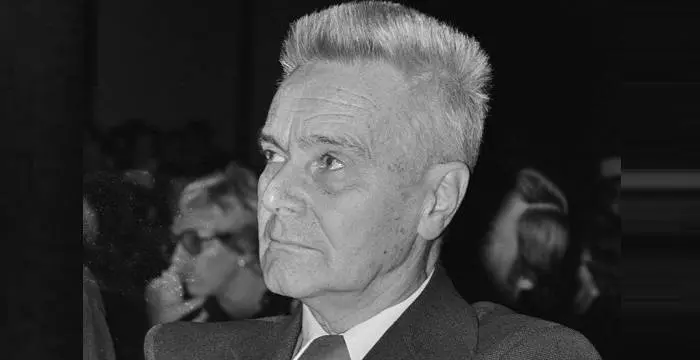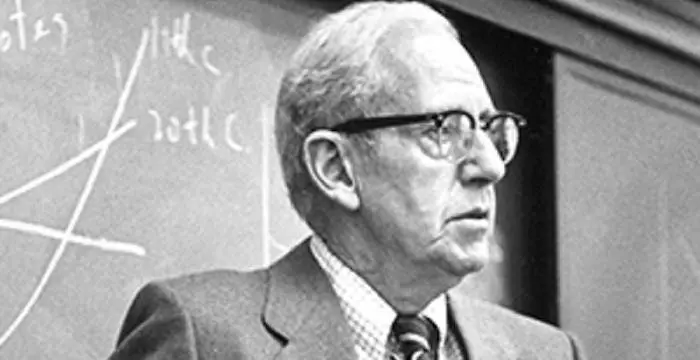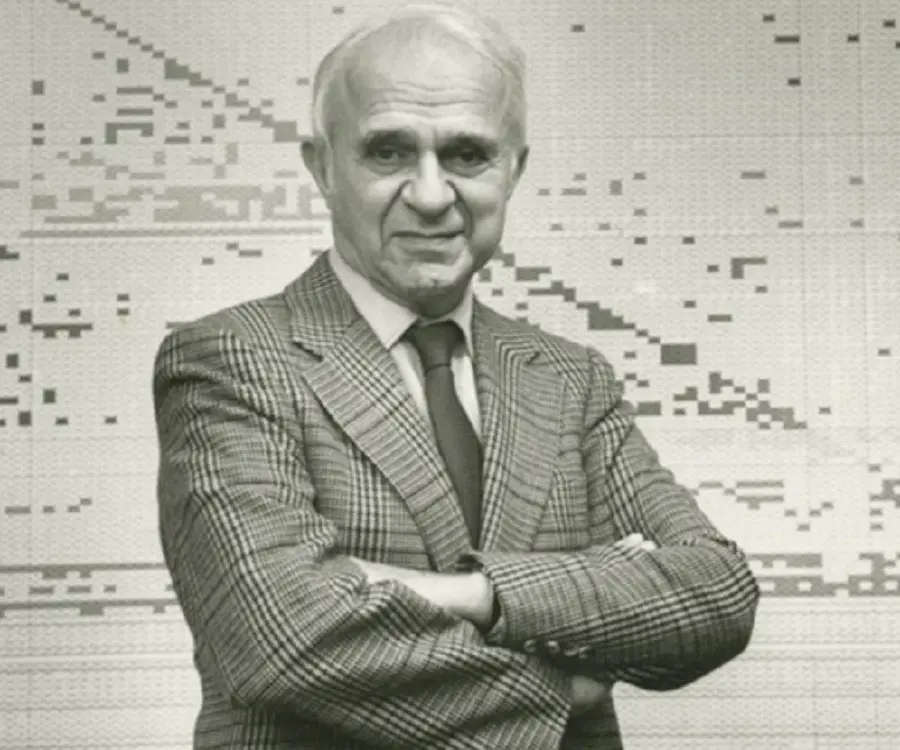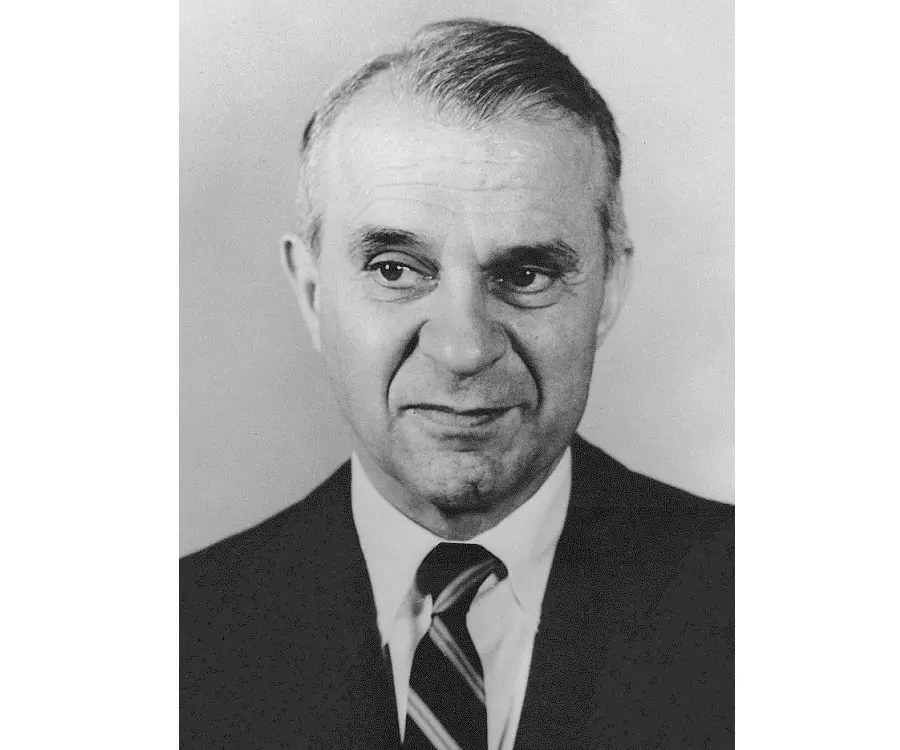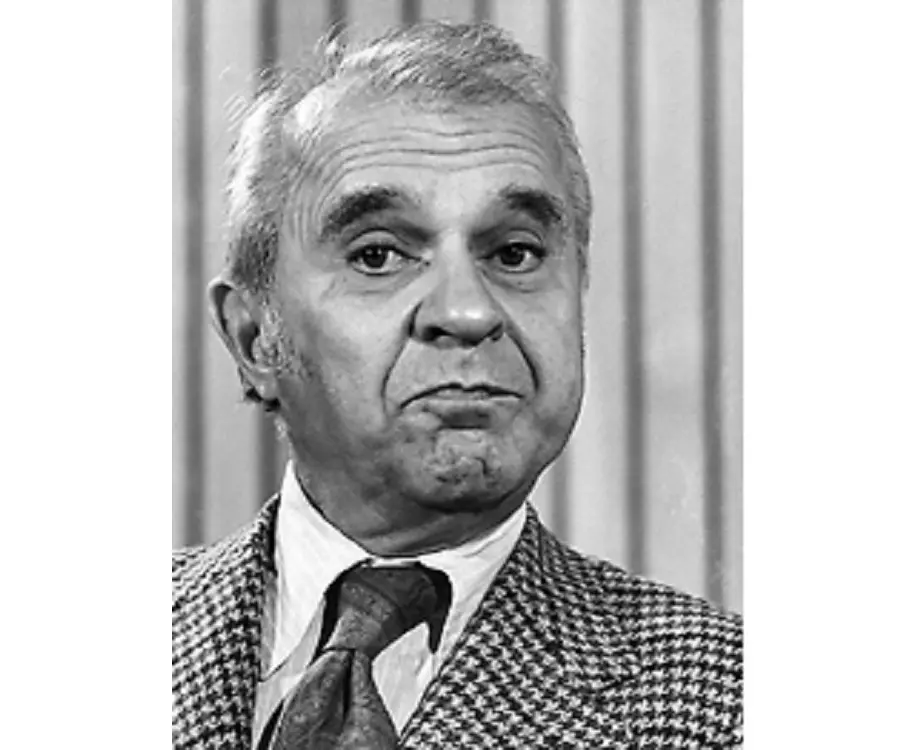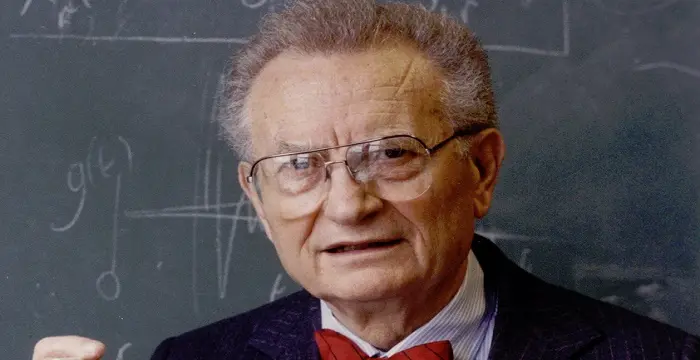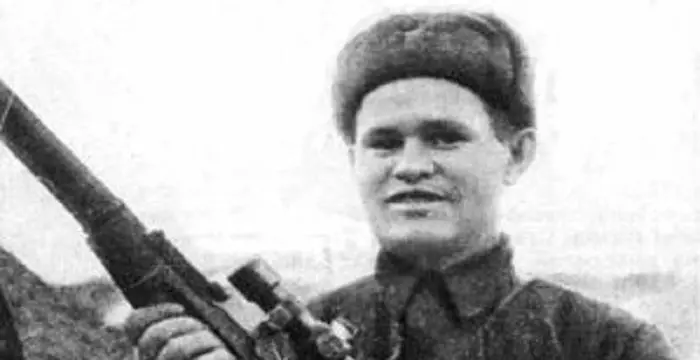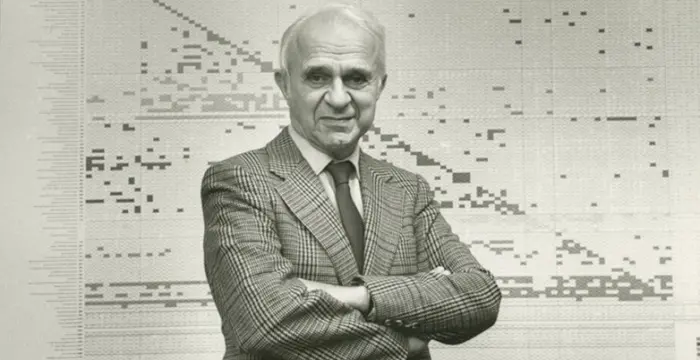
Wassily Leontief - Nobel Prize Winner in Economics, Birthday and Family
Wassily Leontief's Personal Details
Wassily Wassilyovich Leontief was a Russian-American economist renowned for his input–output theory of capital
| Information | Detail |
|---|---|
| Birthday | August 5, 1906 |
| Died on | February 5, 1999 |
| Nationality | Russian, American |
| Famous | Intellectuals & Academics, Economists, Nobel Prize Winner in Economics |
| Spouses | Estelle Marks |
| Known as | Wassily Wassilyevich Leontief |
| Childrens | Svetlana Leontief Alpers |
| Universities |
|
| Founder / Co-Founder |
|
| Birth Place | Munich, Germany |
| Born Country | Germany |
| Gender | Male |
| Father | Wassily W. Leontief |
| Mother | Eugenia |
| Sun Sign | Leo |
| Born in | Munich, Germany |
| Famous as | Nobel Prize Winner in Economics |
| Died at Age | 92 |
// Famous Nobel Prize Winner in Economics
Jan Tinbergen
Jan Tinbergen was a noted 20th century Dutch economist, who won the Nobel Prize in Economics in 1969. Check out this biography to know about his childhood, family, life and achievements.
William Vickrey
William Vickrey was a Canadian born American economist, who won the Nobel Prize for research into the economic theory of incentives under asymmetric information. Check out this biography to know about his family, life and achievements.
Wassily Leontief's photo
Who is Wassily Leontief?
Wassily Wassilyovich Leontief was a Russian-American economist renowned for his input–output theory of capital for which he received the Nobel Memorial Prize in Economic Sciences in the year 1973. His works in general and the input–output theory in particular were instrumental in understanding how the output of a particular sector influenced another sector of the economy. His studies transcended the bridge that economists tended to keep with raw empirical data during his time. He also put in efforts to make data available for further studies in future. Another facet of his studies was the use of computers at a time when most studies relied on theoretical suppositions. Apart from a meticulous researcher, he was also a great teacher, training four future Nobel Laureates during his years at Harvard. Towards the end of his career, he moved to the New York University, where he continued with his research work until the age of eighty-five, teaching there even after his retirement well into his nineties. He was widely recognized for his works as was evident by his memberships in many eminent societies and institutions. He was a thinker; but believed that theories were no good unless they were backed by facts.
// Famous Intellectuals & Academics
Bertil Gotthard Ohlin
Bertil Gotthard Ohlin was a famous Swedish economist. This biography profiles his childhood, family life & achievements.
Emily Greene Balch
Emily Greene Balch was an American economist, sociologist and pacifist who won the 1946 Nobel Peace Prize. This biography of Emily Greene Balch provides detailed information about her childhood, life, achievements, works & timeline.
Martin Buber
One of the greatest philosophers to have ever walked on earth, Martin Buber contributions to philosophy is a long-standing one. Explore all about his profile, childhood, life and timeline here.
Childhood & Early Years
Wassily Wassilyevich Leontief was born on August 5, 1906 in Munich, Germany. Both his parents were Russians. His father, Wassily W. Leontief, a professor of labor economics at the University of St. Petersburg, belonged to an old-believer family living in that city since 1741. He was educated in Germany.
His mother, Genya nee Becker, an art historian, came from a wealthy Jewish family from Odessa. Shortly before his birth, they had traveled to Munich to avail better medical facility, as a result of which, Wassily was born in Munich, not in St. Petersburg, as claimed by many biographers.
Soon after Wassily’s birth, the family moved back to St. Petersburg, where he was baptized at the Spaso-Preobrazhenskaya Kolotyshinskaya Church at the age of three weeks. Initially they lived in his grandfather’s house; but later moved to Krestovskiy Island.
Like most other children, Wassily had his initial education at the local gymnasium. But everything changed with the advent of the February Revolution in 1917. Although his father was able to keep his job, they lost their property and had to move out of their home.
From 1917 to 1919, Wassily studied at home. Thereafter, he was admitted to the 27th Soviet Union Labor School, from where he graduated in 1921, receiving his school leaving diploma at the age of fifteen.
In 1921, Walissy Leontief entered the University of Petersburg, newly renamed as University of Leningrad, with philosophy and sociology. But very soon, economics caught his interest and he gave up philosophy and took up economics in its place.
From the very start of his university years, he began to take interest in his country’s socio-political environment. Lack of intellectual and personal freedom began to worry him and he soon became vocal about it, inviting the wrath of the communist regime.
He was first arrested at the age of fifteen, being caught while nailing anticommunist posters on the wall of a military barrack. For several days, he was placed under solitary confinements. But on his release, he promptly resumed his anticommunist activities, inviting further imprisonments.
In 1924, he received his Learned Economist degree, equivalent to MA degree elsewhere. By then, he had mastered German and French, having read the works of most prominent German and French economists.
In 1925, a growth was detected, possibly on his neck, which the doctors diagnosed as sarcoma. He then applied for permission to travel to Germany. Since the authorities thought that he would die anyway, they allowed him to leave.
In Berlin, his growth was found to be benign. Therefore, he entered the University of Berlin, working for his PhD simultaneously with Ladislaus Bortkiewicz, a well-known economist and statistician from St. Petersburg, and Werner Sombart, a German economist and sociologist.
From the very beginning, Leontief had realized that to be successful in economics, one has to have good grounding in mathematics. While Sombart was a great social scientist, he did not know mathematics, a subject that Leontief studied with Bortkiewicz.
In 1928, Leontief submitted his dissertation entitled, ‘Die Wirtschaft als Kreislauf’ (The Economy as Circular Flow), earning his PhD in 1929. By then, his ideas about input-output analysis, a work that would make him famous one day, had already started forming in his mind.
Early Career
In 1927, Leontief began his career at the Institut für Weltwirtschaft (Institute for the World Economy) under the University of Kiel. Remaining there until 1930, he worked mostly on the derivation of statistical demand and supply curves.
In 1929, while he was still under the employment of the University of Kiel, he traveled to Nanking, China, at the invitation of the Chinese government, and was employed as an advisor to the Ministry of Railroad. He returned to Germany in the following year, resuming his research work at Kiel.
In 1931, he moved to the United States of America, where he joined the National Bureau of Economic Research, one of the finest organizations working in his field. Here, working from the organization’s New York office, he began his research on the American economy, which had just entered the Great Depression.
Realizing that partial analysis was incapable of explaining the structure and operation of economic systems, he began to formulate a general equilibrium theory that would help in empirical implementation. The papers he published attracted the attention of many economists.
At Harvard
In 1932, he was invited to join the economics department of the Harvard University as an instructor in economics. Before he took up the position, he made sure that the university helped him to develop his ideas on, what later became known as input-output analysis.
As agreed upon, Harvard provided him with a grant of $2,000 as well as a research assistant. With that, he began constructing a table covering 42 American industries for the years 1919 and 1929. It was a tedious work and the figures took him months to compile, after which, they had to perform manual calculations.
In 1933, he was promoted to the post of Assistant Professor. While working on the input-output analysis, he also published a number of papers. For example, in 1933, he published an important article on the analysis of international trade via indifference curves. In 1934, he created his non-linear cobweb model.
In 1935, he became the first social scientist to use a computer. It was, however, not an electronic computer, but a large scale mechanical computing machine. In the same year, he also launched his ‘Price Analysis’ seminar, which would one day help to establish mathematical economics at Harvard.
In 1936, Wassily Leontief published a paper on ‘composite commodities’, which later formed the basis of microeconomic theorem. In addition, he also published reviews on Keynes's General Theory.
In 1939, he was promoted to the post of Associate Professor. Very soon, as the Second World War broke out, he was appointed a consultant to the Office of Strategic Services, helping the US government to plan for better industrial production, a job he carried on alongside full time teaching.
In 1941, he published the initial results of his work on input-output analysis as ‘Structure of the American Economy, 1919-1929’. Thereafter, he continued developing his theory, working to find out its various applications and while doing so, he began using Mark I, the first large-scale electronic computer, in 1943.
In 1946, Leontief was appointed a full professor at Harvard. In the same year, he published a paper on the wage contract. It outlined what is now called a classical application of the principal-agent model.
In 1948, he founded Harvard Research Project on the Structure of the American Economy with the aim of expanding and refining his input-output models. He became its first director, a position he held till 1973.
For this Research Project, he received grants from the Ford and Rockefeller Foundations and the Air Force. Later, he gave up the Air Force grant because there was a criticism about his input-output theory. For this work, he also received a 650-punch-card computer from I.B.M., known as Mark II.
In 1949, he divided the U.S. economy into 500 sectors, modeling each of them with a linear equation with the help of his computer. Thus, he became one of the first persons to use computers for large scale mathematical modeling.
In 1953, working further on his input-output analysis, he published 'Studies in the Structure of the American Economy'. In the same year, he was named the Henry Lee Professor of Economics, holding the chair until he left Harvard in 1975.
Also in 1953, he noticed that USA, which was abundant in capital, but short in labor, exported more labor-intensive materials such as food grains, thus establishing ‘Leontief Paradox’. In the same year, he published the result of this work as ‘Domestic Production and Foreign Trade: the American capital position re-examined’.
In 1961, he served as a consultant to the United Nations on the economic consequences of disarmament. At home too, he argued that reduction of the defense budget was not only necessary, but also viable. His proposal was accepted by the law-makers, leading to gradual decrease in the defense spending.
In 1965, he became the Chairman of Harvard Society of Fellows. But sometime thereafter, his relation with the university became strained. When in 1969, the Harvard students held a protest, he sided with them.
In 1975, he left Harvard University, disgruntled that too often teachers did not teach and researchers did not research. He had also joined an internal probe, in which he had criticized the economic department for number of reasons such as taking overtly narrow approach in scholarship etc.
Later Years
On leaving Harvard in 1975, he joined the New York University, where he taught both graduate and undergraduate classes. Concurrently, he continued with his research work, producing seminal works like ‘Essays in Economics, II’ and ‘The Future of the World Economy’, in 1977.
In 1978, he founded of The Institute of Economic Analysis at The New York University, directing the institute till 1991. During this period, he also started expanding his work on input-output analysis, helping other nations to adopt it.
From 1980s, he started co-authoring number of books such as 'Military Spending: Facts and Figures, Worldwide Implications and Future Outlook’ (1983), 'The Future of Non-Fuel Minerals in the U. S. and ‘World Economy' (1983) and ‘The Future Impact of Automation on Workers’ (1986) . In addition, he wrote number of papers on varied topics.
Since late 1980s, Leontief started working with China and Russia. He was, however, more involved with Soviet Russia, guiding the nation during its transition from a centrally planned economy to a market economy.
In 1991, he retired from his position at the New York University; but continued teaching, concurrently co-publishing important papers. The last papers to be published in his name were 'Can Economics be Reconstructed as an Empirical Science?' and 'Money-Flow Computations', both in 1993.
Major Works
Wassily Leontief is best remembered for his 1941 work, ‘The Structure of the American Economy 1919–1929: An Empirical Application of Equilibrium Analysis’. Based on his input-output analysis, the book derives its value as much from his rich experience and painstaking compilation of data as for his vivid style of writing.
Awards & Achievements
In 1973, Leontief received the The Sveriges Riksbank Prize in Economic Sciences in Memory of Alfred Nobel "for the development of the input-output method and for its application to important economic problems".
He also received many other prestigious awards, such as the Bernhard-Harms Prize from the Institute of World Economics at the University of Kiel (1970), Takemi Memorial Award, Institute of Seizon & Life Sciences, Japan (1991) and Harry Edmonds Award for Life Achievement, International House, New York (1995) etc.
Personal Life & Legacy
In 1932, Wassily Leontief married Estelle Marks, a poet and an author, known for her memoir ‘Genia and Wassily’. They had one daughter, Svetlana Leontief Alpers, who later became an art historian, professor, writer and critic.
He passed away at the New York University Medical Center on the night of February 5, 1999. He was then 93 years old and was survived by his wife and daughter.
// Famous Economists
Bertil Gotthard Ohlin
Bertil Gotthard Ohlin was a famous Swedish economist. This biography profiles his childhood, family life & achievements.
Emily Greene Balch
Emily Greene Balch was an American economist, sociologist and pacifist who won the 1946 Nobel Peace Prize. This biography of Emily Greene Balch provides detailed information about her childhood, life, achievements, works & timeline.
Paul Samuelson
Nobel laureate Paul Anthony Samuelson is referred to as the ‘Father of Modern Economics’. This biography profiles his childhood, life, career, achievements and interesting facts about him.
Wassily Leontief's awards
| Year | Name | Award |
|---|---|---|
Other | ||
| 0 | 1991 - Takemi Memorial Award | |
| 0 | 1995 - Harry Edmonds Award for Life Achievement | |
| 0 | 1973 - Nobel Memorial Prize award | |
Wassily Leontief biography timelines
- // 5th Aug 1741 To 5th Aug 1906Wassily Wassilyevich Leontief was born on August 5, 1906 in Munich, Germany. Both his parents were Russians. His father, Wassily W. Leontief, a professor of labor economics at the University of St. Petersburg, belonged to an old-believer family living in that city since 1741. He was educated in Germany.
- // 1917Like most other children, Wassily had his initial education at the local gymnasium. But everything changed with the advent of the February Revolution in 1917. Although his father was able to keep his job, they lost their property and had to move out of their home.
- // 1917 To 1919From 1917 to 1919, Wassily studied at home. Thereafter, he was admitted to the 27th Soviet Union Labor School, from where he graduated in 1921, receiving his school leaving diploma at the age of fifteen.
- // 1919 To 1929As agreed upon, Harvard provided him with a grant of $2,000 as well as a research assistant. With that, he began constructing a table covering 42 American industries for the years 1919 and 1929. It was a tedious work and the figures took him months to compile, after which, they had to perform manual calculations.
- // 1921In 1921, Walissy Leontief entered the University of Petersburg, newly renamed as University of Leningrad, with philosophy and sociology. But very soon, economics caught his interest and he gave up philosophy and took up economics in its place.
- // 1924In 1924, he received his Learned Economist degree, equivalent to MA degree elsewhere. By then, he had mastered German and French, having read the works of most prominent German and French economists.
- // 1925In 1925, a growth was detected, possibly on his neck, which the doctors diagnosed as sarcoma. He then applied for permission to travel to Germany. Since the authorities thought that he would die anyway, they allowed him to leave.
- // 1927 To 1930In 1927, Leontief began his career at the Institut für Weltwirtschaft (Institute for the World Economy) under the University of Kiel. Remaining there until 1930, he worked mostly on the derivation of statistical demand and supply curves.
- // 1928 To 1929In 1928, Leontief submitted his dissertation entitled, ‘Die Wirtschaft als Kreislauf’ (The Economy as Circular Flow), earning his PhD in 1929. By then, his ideas about input-output analysis, a work that would make him famous one day, had already started forming in his mind.
- // 1929In 1929, while he was still under the employment of the University of Kiel, he traveled to Nanking, China, at the invitation of the Chinese government, and was employed as an advisor to the Ministry of Railroad. He returned to Germany in the following year, resuming his research work at Kiel.
- // 1931In 1931, he moved to the United States of America, where he joined the National Bureau of Economic Research, one of the finest organizations working in his field. Here, working from the organization’s New York office, he began his research on the American economy, which had just entered the Great Depression.
- // 1932In 1932, he was invited to join the economics department of the Harvard University as an instructor in economics. Before he took up the position, he made sure that the university helped him to develop his ideas on, what later became known as input-output analysis.
- // 1932In 1932, Wassily Leontief married Estelle Marks, a poet and an author, known for her memoir ‘Genia and Wassily’. They had one daughter, Svetlana Leontief Alpers, who later became an art historian, professor, writer and critic.
- // 1935In 1935, he became the first social scientist to use a computer. It was, however, not an electronic computer, but a large scale mechanical computing machine. In the same year, he also launched his ‘Price Analysis’ seminar, which would one day help to establish mathematical economics at Harvard.
- // 1936In 1936, Wassily Leontief published a paper on ‘composite commodities’, which later formed the basis of microeconomic theorem. In addition, he also published reviews on Keynes's General Theory.
- // 1939In 1939, he was promoted to the post of Associate Professor. Very soon, as the Second World War broke out, he was appointed a consultant to the Office of Strategic Services, helping the US government to plan for better industrial production, a job he carried on alongside full time teaching.
- // 1946In 1946, Leontief was appointed a full professor at Harvard. In the same year, he published a paper on the wage contract. It outlined what is now called a classical application of the principal-agent model.
- // 1948 To 1973In 1948, he founded Harvard Research Project on the Structure of the American Economy with the aim of expanding and refining his input-output models. He became its first director, a position he held till 1973.
- // 1949In 1949, he divided the U.S. economy into 500 sectors, modeling each of them with a linear equation with the help of his computer. Thus, he became one of the first persons to use computers for large scale mathematical modeling.
- // 1953 To 1975In 1953, working further on his input-output analysis, he published 'Studies in the Structure of the American Economy'. In the same year, he was named the Henry Lee Professor of Economics, holding the chair until he left Harvard in 1975.
- // 1953Also in 1953, he noticed that USA, which was abundant in capital, but short in labor, exported more labor-intensive materials such as food grains, thus establishing ‘Leontief Paradox’. In the same year, he published the result of this work as ‘Domestic Production and Foreign Trade: the American capital position re-examined’.
- // 1961In 1961, he served as a consultant to the United Nations on the economic consequences of disarmament. At home too, he argued that reduction of the defense budget was not only necessary, but also viable. His proposal was accepted by the law-makers, leading to gradual decrease in the defense spending.
- // 1965 To 1969In 1965, he became the Chairman of Harvard Society of Fellows. But sometime thereafter, his relation with the university became strained. When in 1969, the Harvard students held a protest, he sided with them.
- // 1973In 1973, Leontief received the The Sveriges Riksbank Prize in Economic Sciences in Memory of Alfred Nobel "for the development of the input-output method and for its application to important economic problems".
- // 1975In 1975, he left Harvard University, disgruntled that too often teachers did not teach and researchers did not research. He had also joined an internal probe, in which he had criticized the economic department for number of reasons such as taking overtly narrow approach in scholarship etc.
- // 1975 To 1977On leaving Harvard in 1975, he joined the New York University, where he taught both graduate and undergraduate classes. Concurrently, he continued with his research work, producing seminal works like ‘Essays in Economics, II’ and ‘The Future of the World Economy’, in 1977.
- // 1978 To 1991In 1978, he founded of The Institute of Economic Analysis at The New York University, directing the institute till 1991. During this period, he also started expanding his work on input-output analysis, helping other nations to adopt it.
- // 1991 To 1993In 1991, he retired from his position at the New York University; but continued teaching, concurrently co-publishing important papers. The last papers to be published in his name were 'Can Economics be Reconstructed as an Empirical Science?' and 'Money-Flow Computations', both in 1993.
- // 5th Feb 1999He passed away at the New York University Medical Center on the night of February 5, 1999. He was then 93 years old and was survived by his wife and daughter.
// Famous Russian peoples
Vasily Zaytsev
Vasily Zatysev was a Russian sniper who served during the World War II. Check out this biography to know about his childhood, family life, achievements and fun facts about him.
Zyzz (Aziz Shavershian)
Zyzz (Aziz Shavershian) was a popular Australian Body Builder and internet personality. Check out this biography to know about his childhood, family life, achievements and other facts about his life.
Kristina Pimenova
Read this bio to gather several facts, trivia and many details related to the personal and family life of Kristina Pimenova.
Nikolai Valuev
Nikolai Valuev is a Russian retired professional boxer, actor, politician, and author. Check out this biography to know about his childhood, family life, achievements and fun facts about him.
Olesya Rulin
Olesya Rulin is a Russian-American actress, best known for her role in Disney's commercially successful ‘High School Musical’ franchise. Check out this biography to know about her childhood, family life, achievements and fun facts about her life.
Vitaly Zdorovetskiy
Check out all that you wanted to know about Vitaly Zdorovetskiy, the budding YouTube Personality; his birthday, family and personal life, his girlfriends, fun trivia facts and more.
Wassily Leontief's FAQ
What is Wassily Leontief birthday?
Wassily Leontief was born at 1906-08-05
When was Wassily Leontief died?
Wassily Leontief was died at 1999-02-05
Where was Wassily Leontief died?
Wassily Leontief was died in New York City
Which age was Wassily Leontief died?
Wassily Leontief was died at age 92
Where is Wassily Leontief's birth place?
Wassily Leontief was born in Munich, Germany
What is Wassily Leontief nationalities?
Wassily Leontief's nationalities is Russian, American
Who is Wassily Leontief spouses?
Wassily Leontief's spouses is Estelle Marks
Who is Wassily Leontief childrens?
Wassily Leontief's childrens is Svetlana Leontief Alpers
What was Wassily Leontief universities?
Wassily Leontief studied at University of Leningrad (1921-25), PhD Economics, University of Berlin (1925-28)
Which company or organization was founded by Wassily Leontief?
Wassily Leontief was the founder/co-founder of Institute for Economic Analysis.
Who is Wassily Leontief's father?
Wassily Leontief's father is Wassily W. Leontief
Who is Wassily Leontief's mother?
Wassily Leontief's mother is Eugenia
What is Wassily Leontief's sun sign?
Wassily Leontief is Leo
How famous is Wassily Leontief?
Wassily Leontief is famouse as Nobel Prize Winner in Economics
